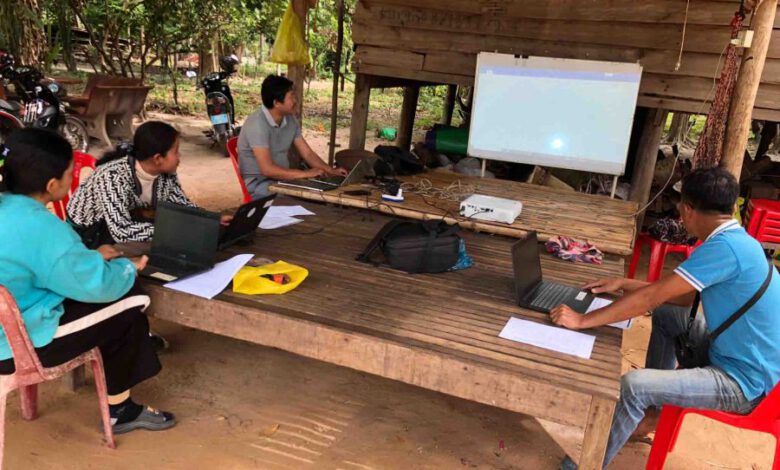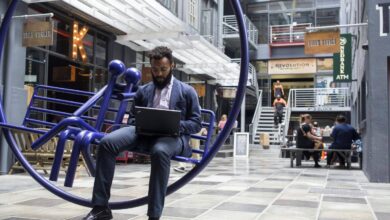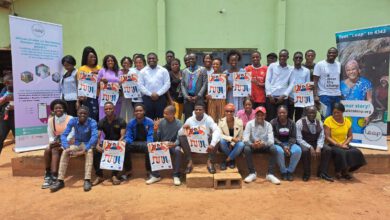Access to Tech for Creators in Smaller Cities

In Zulu, a little town in South Africa, a young woman transformed her grandmother’s beadwork into a digital business using only a phone, an online presence, and Instagram. Her craft found buyers in Cape Town and even Europe, but not without difficulty.
Her story reflects how innovators in smaller regions are gaining access to technology, making substantial progress while yet confronting significant difficulties. This article looks at that journey through the lenses of accessibility, growth, and opportunity.
Technology for Creators in Africa’s Smaller Cities
Cities such as Lagos, Nairobi, Accra, and Cape Town frequently take center stage in Africa’s rapidly expanding creator economy. But what about the fashion designer in the Bahamas? And the product designer in Malawi? These smaller communities are filled with potential, but many creators are unable to access the platforms and resources that currently fuel innovation.
Did you know Kenya has over 90 tech hubs, yet more than 70% live in only Nairobi and Mombasa? For young people in small towns, being a creator means more than simply overcoming creative obstacles; it also entails dealing with inadequate internet, inconsistent power, and limited support.
However, the popularity of mobile apps like WhatsApp and Instagram is giving young people a chance to show up and stand out. A single video or product post can now open global doors of opportunity.
Small Cities creators: Access to tech, Progress, and Challenges
In most capital cities, creators are getting used to using technology. However, away from the paparazzi, in smaller towns like Gulu in Uganda, creators are also telling stories and promoting civilization, although with fewer resources.
Let’s explore what that reality looks like.
Access
Being a creator in Africa used to mean waiting for a stage. Now, it starts with a smartphone. With the right device in hand, a young woman can turn her beadwork into a brand. A dancer can go viral. A poet can sell e-books from their bedroom. Platforms like Instagram, TikTok, and YouTube have become storefronts, galleries, and global stages.
With tools like Jumia and Gumroad, creators are building businesses without needing a physical space. but for many people living in smaller cities, gaining access to technology is a daily struggle. For example, in Bobo-Dioulasso, Burkina Faso, uploading a brief video would have required numerous efforts and time for the TikTok lady who went viral. A power failure could result in missing a client’s message.
Nonetheless, creators find solutions. They learn on rented devices, rely on community centers, and extend their resources to participate online. Every time a reel goes live or a product is sold, it serves as a reminder that good things can happen despite the odds.
Progress
Paystack and other entrepreneurs help creatives get compensated. Africa No Filter and Nest Hub in Ghana are trying to deliver training, mentorship, and technology resources to neglected communities. In cities that rarely make news, creators are creating quiet ripples with big outcomes.
In Ogbomoso, a young clothes designer establishes her business on her phone, utilizing TikTok, Instagram, and WhatsApp to interact with clients she has never met. Ennovate Lab, the town’s local innovation hub, is driving her achievement by providing training, coaching, and funding for local artists. They are demonstrating that technology isn’t just for big cities but for everyone.
In Benin City, graphic designers are teaching themselves how to use Procreate and CapCut using YouTube lessons, creating visuals for brands they’ve never met in person. Musicians use Boomplay and Audiomack to upload studio recordings to fans all over the world.
What used to need a trip to Lagos can now be accomplished from the comfort of one’s bedroom, thanks to a smartphone and creativity Selar and other websites enable them to sell digital product. Canva makes design easier. All of this lowers the barrier to entry, turning “I can’t” into “Why not?”
Challenges
While the creative energy is alive, the obstacles are difficult to overlook. Many brilliant creatives are unfamiliar with tools like design software, internet storefronts, and scheduling platforms.
However, there is an issue of monetization. While global creatives can accept payments through PayPal or Stripe, many smaller locations still face restrictions or have unstable payment methods. So, even when small-town creatives go viral, converting attention into revenue becomes another difficulty to address.
Compared to larger cities, where IT centers organize workshops, smaller cities lack mentorship and upskilling options, leaving them in the dark. Additionally, many people do not know how to improve an Instagram bio, create a content schedule, or list items on a marketplace. Without mentorship or access to community tech spaces, they are blocked off from the developing sector.
Final Thought
There is a saying: “From Ogbomoso to the rest of the world.” It means you don’t have to live in a huge city to make a significant difference.
Today, innovators in smaller communities are doing just that by leveraging technology to share their work, expand their brands, and reach worldwide audiences. They are overcoming challenges with the help of local hubs and sheer determination.
Now is the time to invest in their voices. Because genius exists everywhere, access shouldn’t be an obstacle.





